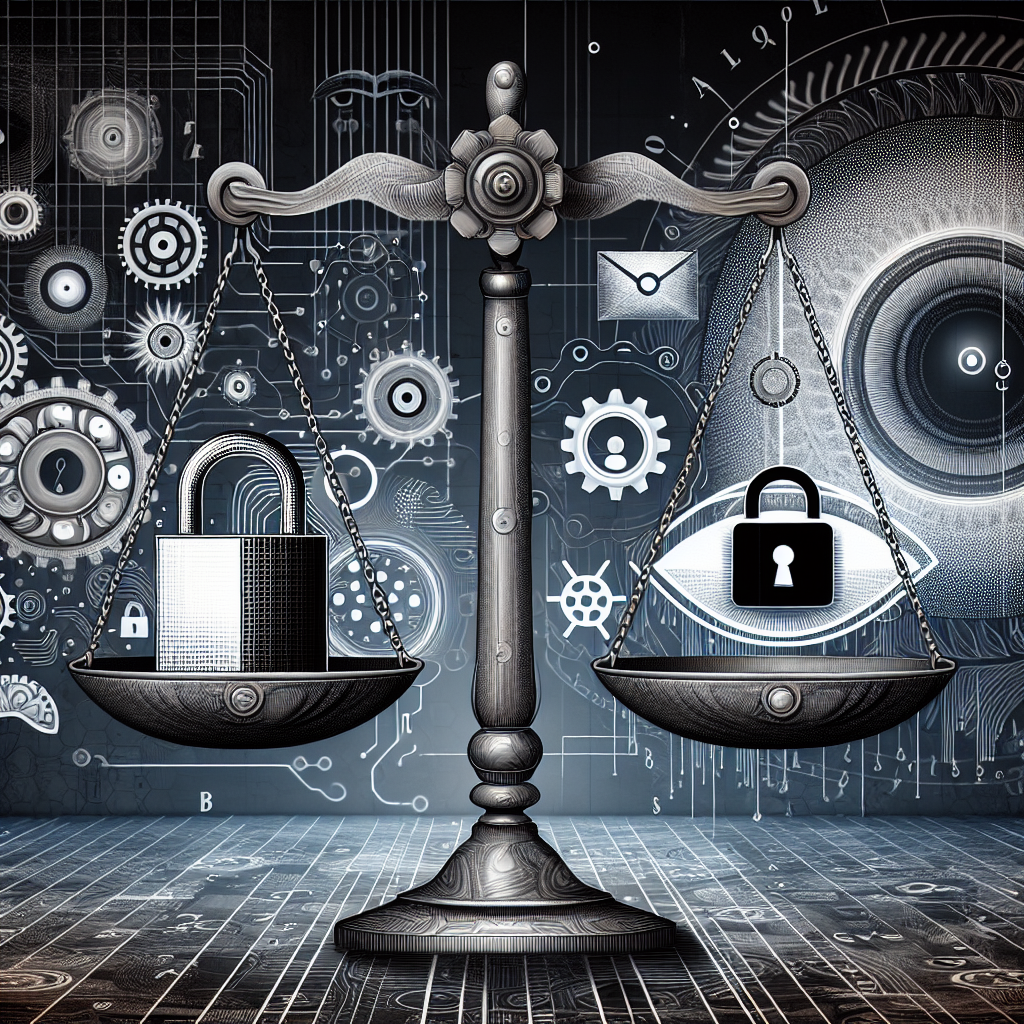In recent years, the rapid advancement of artificial intelligence (AI) technology has paved the way for the development of sophisticated surveillance systems that have the capability to collect, analyze, and store massive amounts of data. While these systems have the potential to enhance security measures and improve public safety, they also raise concerns about the erosion of individual privacy rights.
The debate over balancing security and privacy in the age of AI-powered surveillance is complex and multifaceted. On one hand, proponents argue that the use of AI technology in surveillance can help law enforcement agencies prevent and solve crimes more effectively, monitor public spaces for suspicious activities, and respond to emergencies in a timely manner. AI-powered surveillance systems can also be used to identify and track potential threats, such as terrorists or violent criminals, before they can carry out their plans.
On the other hand, critics raise concerns about the potential for abuse and misuse of AI-powered surveillance systems, as well as the risks of mass surveillance and the infringement of individual privacy rights. They argue that the constant monitoring and tracking of individuals in public spaces can lead to a chilling effect on free speech and expression, as well as a violation of the right to privacy.
In order to strike a balance between security and privacy in the age of AI-powered surveillance, it is important to establish clear guidelines and regulations governing the use of these technologies, as well as to implement safeguards to protect individual privacy rights. This includes ensuring that surveillance systems are used in a transparent and accountable manner, with appropriate oversight and checks and balances in place to prevent abuse.
One approach to balancing security and privacy in the age of AI-powered surveillance is the use of privacy-enhancing technologies (PETs), such as encryption, anonymization, and differential privacy. These technologies can help protect the privacy of individuals while still allowing for the collection and analysis of data for security purposes. By incorporating PETs into surveillance systems, it is possible to strike a balance between security and privacy and ensure that individual rights are respected.
Another important consideration in balancing security and privacy in the age of AI-powered surveillance is the need to establish clear policies and procedures for data retention, sharing, and access. This includes limiting the collection and storage of data to only what is necessary for security purposes, as well as implementing strict access controls and data protection measures to prevent unauthorized use or disclosure of personal information.
In addition, it is important to engage with stakeholders, including civil liberties organizations, privacy advocates, and the public, in discussions about the use of AI-powered surveillance systems and the impact on individual privacy rights. By involving stakeholders in the decision-making process and seeking input from the public, it is possible to ensure that surveillance systems are used in a responsible and ethical manner that respects individual privacy rights.
Ultimately, balancing security and privacy in the age of AI-powered surveillance requires a nuanced and thoughtful approach that takes into account the potential benefits and risks of these technologies. By implementing clear guidelines, incorporating privacy-enhancing technologies, and engaging with stakeholders, it is possible to strike a balance that protects both security and privacy in an increasingly digital and interconnected world.
FAQs:
Q: What are some examples of AI-powered surveillance systems?
A: Some examples of AI-powered surveillance systems include facial recognition technology, predictive analytics software, and automated threat detection systems.
Q: How can AI-powered surveillance systems be used to enhance security measures?
A: AI-powered surveillance systems can be used to monitor public spaces for suspicious activities, identify potential threats, and respond to emergencies in a timely manner.
Q: What are some concerns about the use of AI-powered surveillance systems?
A: Some concerns about the use of AI-powered surveillance systems include the potential for abuse and misuse, mass surveillance, and the infringement of individual privacy rights.
Q: How can privacy-enhancing technologies help protect individual privacy rights in the age of AI-powered surveillance?
A: Privacy-enhancing technologies, such as encryption and anonymization, can help protect the privacy of individuals while still allowing for the collection and analysis of data for security purposes.
Q: What are some best practices for balancing security and privacy in the age of AI-powered surveillance?
A: Some best practices for balancing security and privacy in the age of AI-powered surveillance include establishing clear guidelines and regulations, implementing privacy-enhancing technologies, and engaging with stakeholders in decision-making processes.

